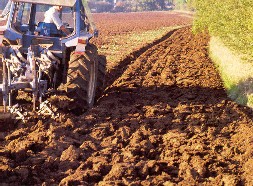

 |
Soil ClassificationOver the years, there have been numerous attempts to give names to soils and to group them into natural classes, in much the same way as plants are named and classified. Classification is important in order to allow comparison between the soils of different regions, and to facilitate information transfer and organisation of the growing knowledge about the main types of soil that occur around the world. The first true soil classification was produced in the second half of the 19th century by Dokuchaiev in the USSR. Dokuchaiev suggested a theory of ‘zonal soils’, where soil types came from clearly defined geographical and climatic locations. In 1953, Kubiena produced a system of classification that proved to be popular and is still widely referred to. His system consisted of 5 main soil groups (and many sub-groups), arranged according to specific horizon classes, as well the type of 'humus' present. Influenced by Kubiena’s ideas and other previous classifications, two international soil classifications have been developed since the 1960s, the American ‘7th Approximation’ classification system published in 1960, and the Food and Agriculture Organisation classification in the 1970s. These have been many attempts to provide a unifying classification as a basis for technology transfer, but this has been hindered by the use of new, often complex terminology for describing soils. For example, the American class names in their system include the terms 'entisols', 'inceptisols', 'aridisols', 'mollisols', 'spodosols', 'alfisols', 'ultisols', 'oxisols' and 'histosols', which to the layman may not mean very much! Although the American and FAO systems are widely discussed and referred to, many countries still use their own national classification systems by preference. It is incredible to think that there is still so much that is unknown about soil types, and that new discoveries are continuously being made all the time. Unfortunately, there is still currently no universal standard for soil classification, although the recent World Reference Base (WRB) for soils may address this in the future. |

|
||